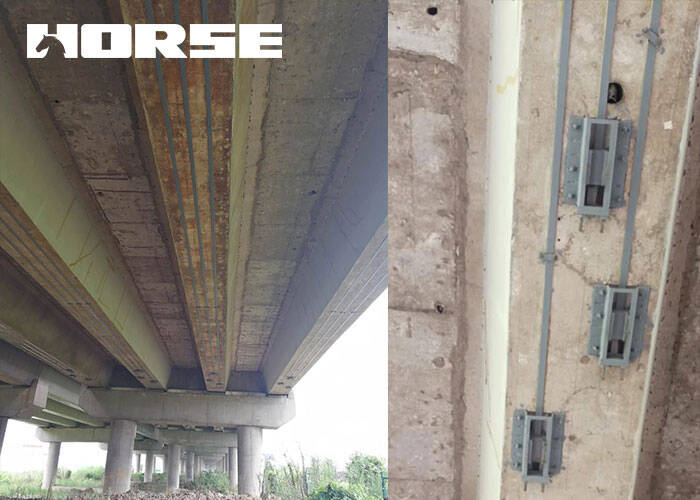Solutions
Horse Construction offers full range of structural strengthening materials with technical supports, documentation supports, products supports, project supports.
Application of two design concepts in structural strengthening of bridges

Application of two design concepts in structural strengthening of bridges
The bridge structure is exposed to the field for a long time, and the material performance will inevitably deteriorate under repeated external loads such as cars, crowds, and temperature, causing the structure to suffer varying degrees of damage. Coupled with the continuous increase of overloaded and heavy-loaded vehicles, many bridges are overwhelmed and structural damage is inevitable. However, bridges with different structures have different failure mechanisms. Therefore, different structural reinforcement strategies should be adopted. At present, the theory of bridge reinforcement is mainly divided into active reinforcement theory and passive reinforcement theory, which are described as follows:
1) Active reinforcement
Load the bridge structure in advance or change the original force system of the structure by adding additional supports, so that the measures applied later will be stressed at the same time as the original structure, and will jointly assume the role of vehicle load and other live loads. So as to achieve the purpose of strengthening the bridge, it is called active strengthening. For example, applying external prestress, increasing the section, changing the arch structure to a beam structure, etc.
2) Passive reinforcement
Reinforcing materials are applied in the tension zone of the structure to compensate for the lack of strength of the structure due to damage. Its characteristic is that the new measures only take on the part of the original structure that has insufficient bearing capacity, and only take on the internal forces caused by the added dead load and vehicle load, which are called passive reinforcement. For example, pasting steel plate, repair welding steel bar, pasting carbon fiber cloth, etc.
Reinforcing with the concept of active reinforcement can better ensure the joint force of the new measures and the original structure. Coordinated deformation, but due to the complex failure behavior of the bridge structure, there is a certain deviation between the actual force status and the theoretical analysis. Especially for prestressed structures, the secondary internal forces caused by structural deformation and destruction are difficult to explain clearly. Therefore, the use of active reinforcement schemes tends to cause the superposition of secondary internal forces of the structure, which will cause more adverse effects on the structure.
The concept of passive reinforcement is adopted for reinforcement, because the new measures take effect after the original structure. Therefore, it will not cause too much negative impact on the existing structure, but due to the phased force, the stress and strain of the supplementary material are lagging, and the material performance cannot be fully utilized, resulting in certain waste.
At present, there are many controversies about these two theoretical engineering circles. The author believes that these two reinforcement theories have no right or wrong, good or bad. If it can be combined with the destructive characteristics and use requirements of the specific bridge, the appropriate selection and the reasonable technology are the successful solutions.
In summary, no matter what reinforcement theory or reinforcement technology is adopted, the purpose of bridge reinforcement is always to improve the original bridge's bearing capacity and service life as the highest objective. Specifically, the reinforcement plan should be based on different bridge types, different construction techniques, different reinforcement positions and combined with actual use conditions, choose different reinforcement methods.
You can find anything here you are in need of, have a trust trying on these products, you will find the big difference after that.

High strength carbon fiber reinforced polymer (CFRP) strip / laminate / plate for structural strengthening and concrete repair

Prestressed carbon fiber reinforced polymer(CFRP) plate for slab, beam strengthening to increase stiffness, reduce distortion and deflection of members, reduce the cracks, avoid and stop cracking.

High strength, unidirectional carbon fiber sheet pre-saturated to form a carbon fiber reinforced polymer (CFRP) sheet used to strengthen structural concrete elements.